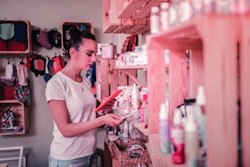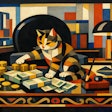
United States Bureau of Statistics analysts reported that overall inflation slowed in October, with consumer prices at 7.7% above 2021 for all goods. Core inflation, which measures volatile items like food, was lower at 6.3% While prices are still on pet owners’ minds in the world’s largest pet food market, that sentiment varied by age group. Younger demographic groups may be more likely to cut back on pet food spending. The American Pet Products Association released the results of its survey conducted in September among 2,013 pet owners in the report “APPA Pulse Study: Pet Ownership In The Current Economy.”
In the September APPA survey, Millennial pet owners were most likely to agree with the statement that their household planned to spend less money on pet food or supplies. To do this, 40% of millennial pet owners planned to switch pet food or supply brands to save money. Survey participants responses suggest that 49% of Millennials plan to spend less money on pet supplies, while 37% say they plan to spend less on pet food.
The youngest demographic group in the survey, Gen Z, increased their stated plans to spend less money on pet food. On the other hand, Baby Boomer pet owners were the least likely to respond that they will make any changes to the amount they spend on their pets’ food or supplies.
“The survey notes an increase in the percentage who say they spent more in the past month (from 31% to 36%), while the percentage who spent less went down by one percentage point to 19%,” APPA analysts wrote. “This increased spending may be correlated with the percentage of pet owners who say they stocked up on pet supplies the last time they shopped. Every pet supply category demonstrated an increase in the percentage who say they stocked up, especially pet food. Pet owners may be stocking up before prices rise further. If prices continue to rise, that could eventually lead to changes in pet owner purchasing decisions, such as switching brands or product lines to save money.”
Pet owners plan to continue spending on pet food
Pet food remains one of the items pet owners plan to continue spending on though. Only 13% would purchase less food, while toys, grooming gear and other supplies would be most likely to feel the budget crunch.
Nearly half of Gen Z and those in urban areas said they spent more on their pet in August. Pet owners with young children, millennials and males also reported spending more. Likewise, the net percentage of pet owners who said they spent less on their pets in August went down by one percentage point, to 19%. These respondents are somewhat more likely to be female, Gen X and live in rural areas.
More than half of survey respondents who were Baby Boomers, or with no young children or who lived in suburban areas said they spent the same on their pet in the past month.
Pet owners seem to be willing to continue spending on pet food despite economic worries. As inflation eases, those concerns may diminish leading to continued growth for the pet food industry in 2023.



















